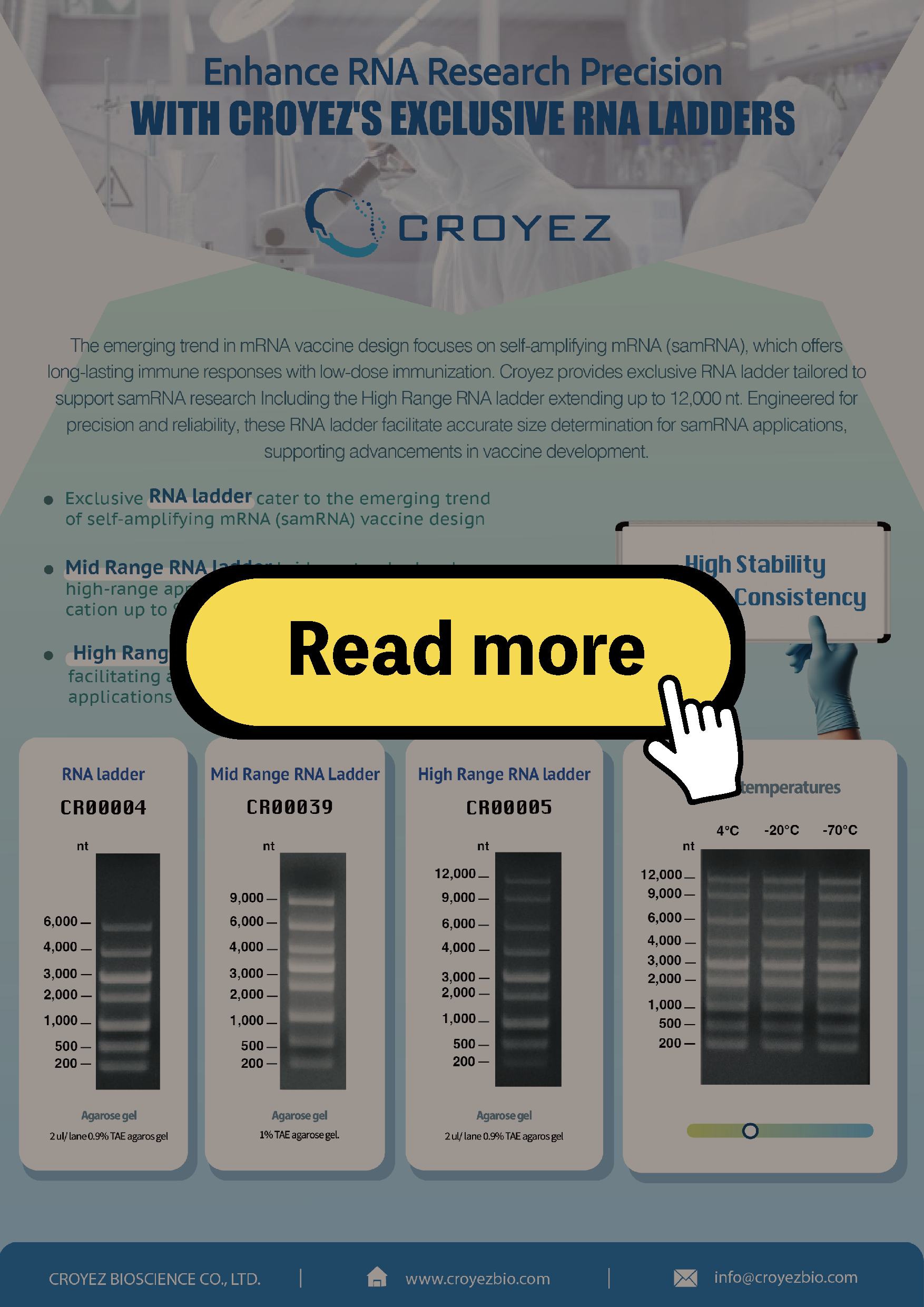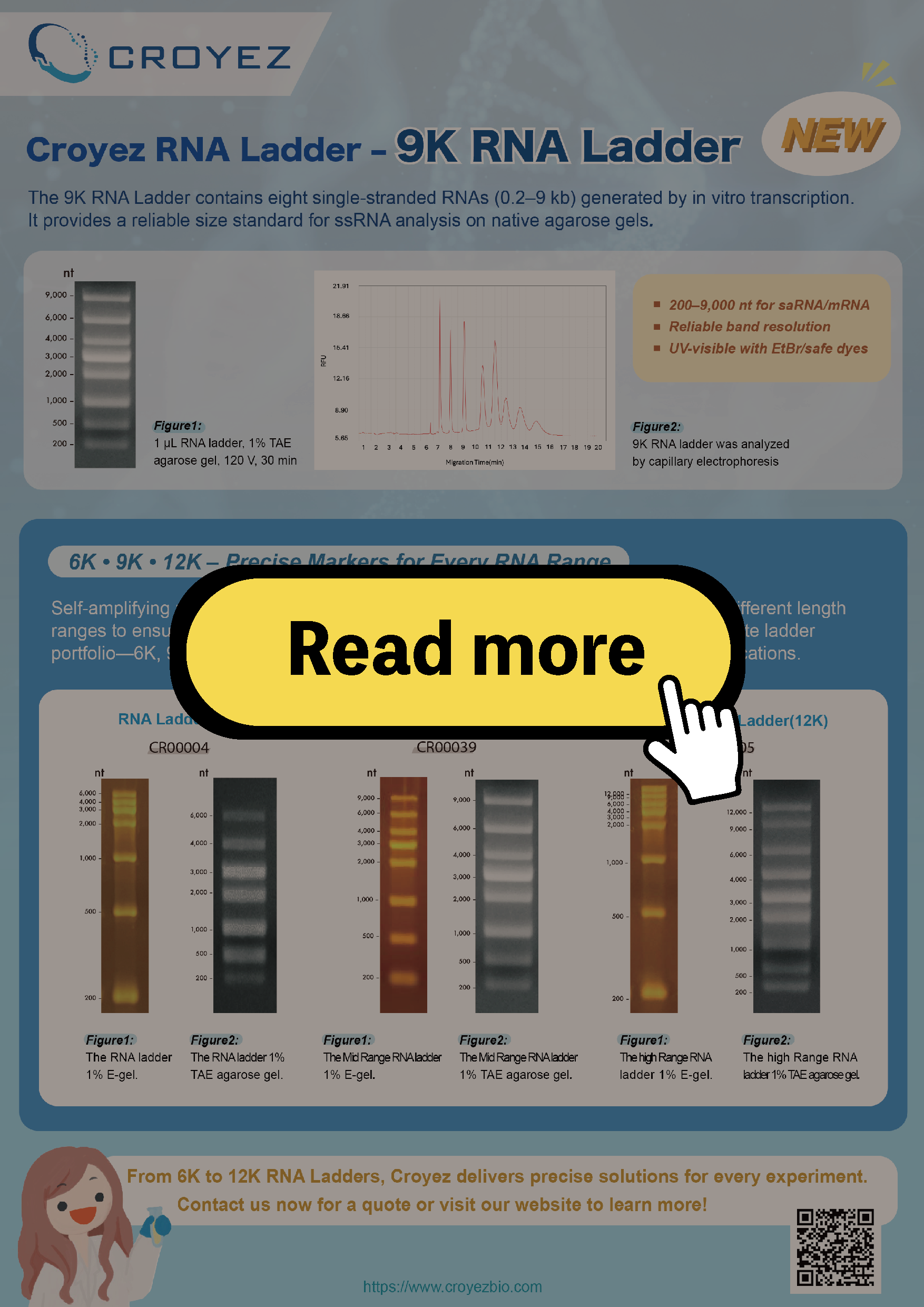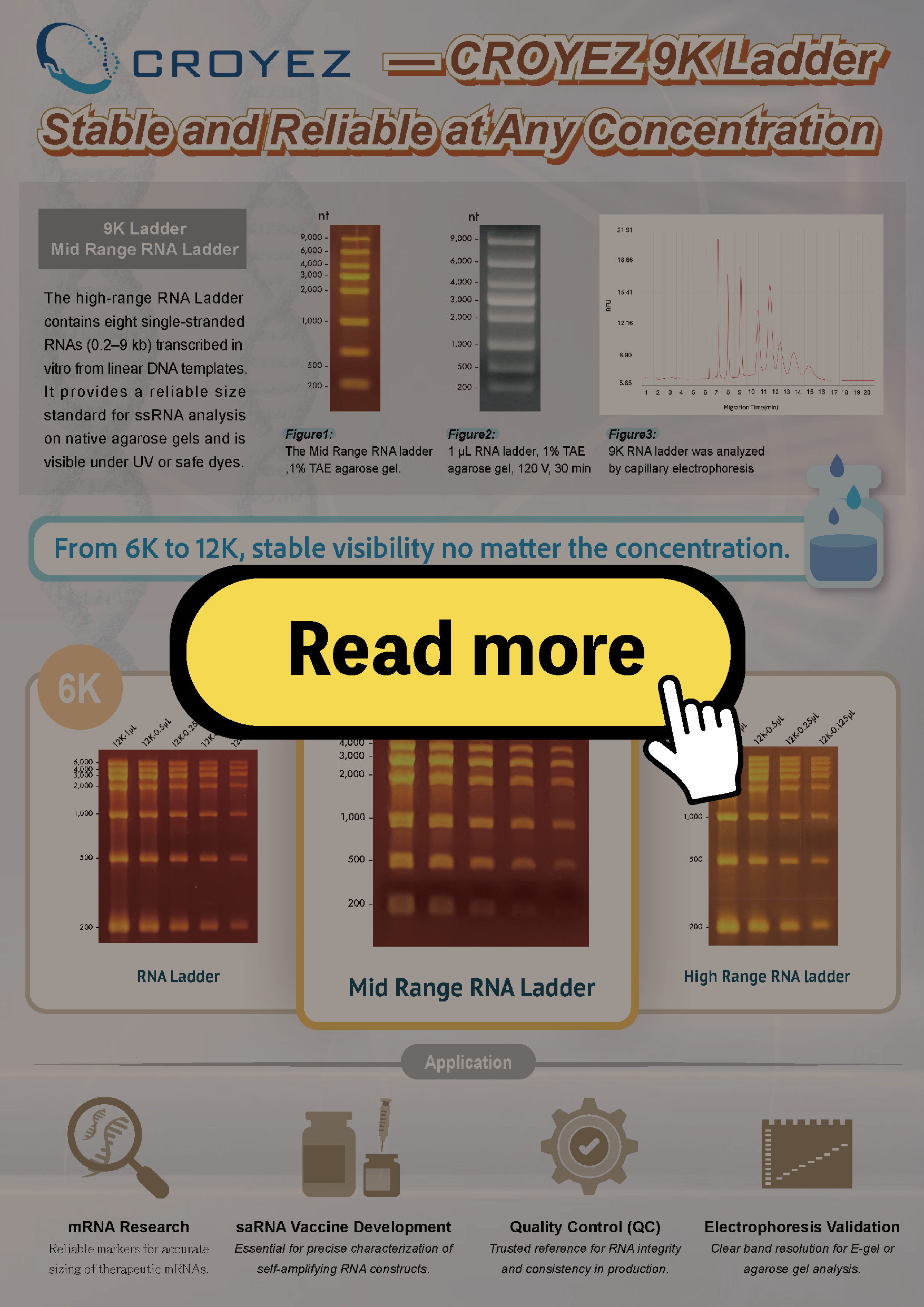How to Choose the Right RNA Ladder
Selecting the correct RNA ladder is imperative for efficient gel electrophoresis. The RNA ladder serves as a size marker, allowing researchers to estimate the size of their experimental samples accurately. The process involves comparing sample sizes with the ladder's known RNA fragments. However, the wide array of choices available in the market adds complexity to this process.
The RNA ladder comprises well-defined RNA fragments with specific lengths, aiding researchers in matching their sample sizes. Additionally, RNA ladders play a crucial role in ensuring uniform gel thickness during electrophoresis. Running an RNA ladder on both ends of the gel facilitates accurate comparisons across the entire width, compensating for potential variations in gel thickness.
Factors for Choosing the Correct RNA Ladder
Two primary factors influence the selection of an appropriate RNA ladder: size range and the number of bands. Researchers must choose a ladder that accommodates their sample size within the maximum and minimum fragment range. Additionally, the number of bands affects the precision of size estimation; more bands provide accuracy but may take longer. For instance, if you anticipate fragments in the range of 100 to 1,000 base pairs, select an RNA ladder that covers this specific size range.Difference between RNA ladder and DNA ladder Selection
The selection of RNA ladders and DNA ladders involves considerations that stem from the inherent differences between RNA and DNA molecules. Here are key distinctions in the selection process:| Distinctions | DNA Ladder | RNA Ladder |
| Molecule Type | Designed specifically for DNA molecules, providing size markers for DNA fragments. | Tailored for RNA molecules, offering size markers for RNA fragments. |
| Purpose of Analysis | Used in experiments focusing on DNA, such as PCR, gel electrophoresis, and DNA sizing. | Employed in RNA-centric experiments, including RNA gel electrophoresis and size determination. |
| Base Composition | Comprises adenine (A), thymine (T), cytosine (C), and guanine (G) bases. | Contains adenine (A), uracil (U), cytosine (C), and guanine (G) bases. |
| Enzymatic Stability | Generally more stable due to the presence of thymine, which is more chemically stable than uracil. | Prone to enzymatic degradation, especially by RNases. |
| Application Considerations | Preferred for DNA-specific applications, such as DNA cloning, sequencing, and restriction enzyme digestion. | Essential for RNA-centric applications, like studying gene expression through RNA analysis. |
| Compatibility with Enzymes | Compatible with DNA-specific enzymes like DNA polymerase. | Compatible with RNA-specific enzymes like reverse transcriptase. |
| Transcription and Translation | Serves as a template for transcription to RNA and subsequently translation to proteins. | Directly involved in translation processes, carrying genetic information for protein synthesis. |
| Sequence Specificity | Follows the sequence of A-T and C-G base pairs. | Adheres to the sequence of A-U and C-G base pairs. |
| Experimental Requirementsy | Chosen based on the specific requirements of DNA-based experiments and the desired size range. | Selected according to the size range needed for RNA-focused experiments. |
| Degradation Concerns | Less susceptible to degradation by DNases. | Requires precautions to prevent degradation by RNases. |
Can I use DNA ladders for RNA analysis?
Like DNA ladders, RNA ladders consist of fragments with varying sizes. Due to the differential migration rates of RNA and DNA in electrophoresis gels, it's crucial to use the appropriate nucleic acid ladder (RNA or DNA) for accurate analysis.In conclusion, choosing the right RNA ladder is essential for accurate RNA gel electrophoresis. Critical factors for selection involve the size range and the number of bands. Clear distinctions between RNA and DNA ladders are present, and RNA ladders are specifically designed for RNA analysis. Utilizing DNA ladders for RNA analysis is discouraged due to variations in migration rates. It's crucial to select the suitable ladder based on experiment requirements to guarantee precise size determination and reliable results.
Croyez provides high-quality RNA Ladders
→ RNA ladder (0.2k-6k bases)
→ Mid Range RNA Ladder(0.2k-9k bases)
→ High Range RNA ladder (0.2k-12k bases)
Other related academic articles:



